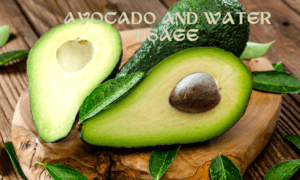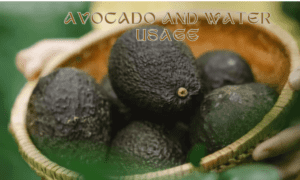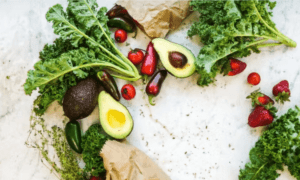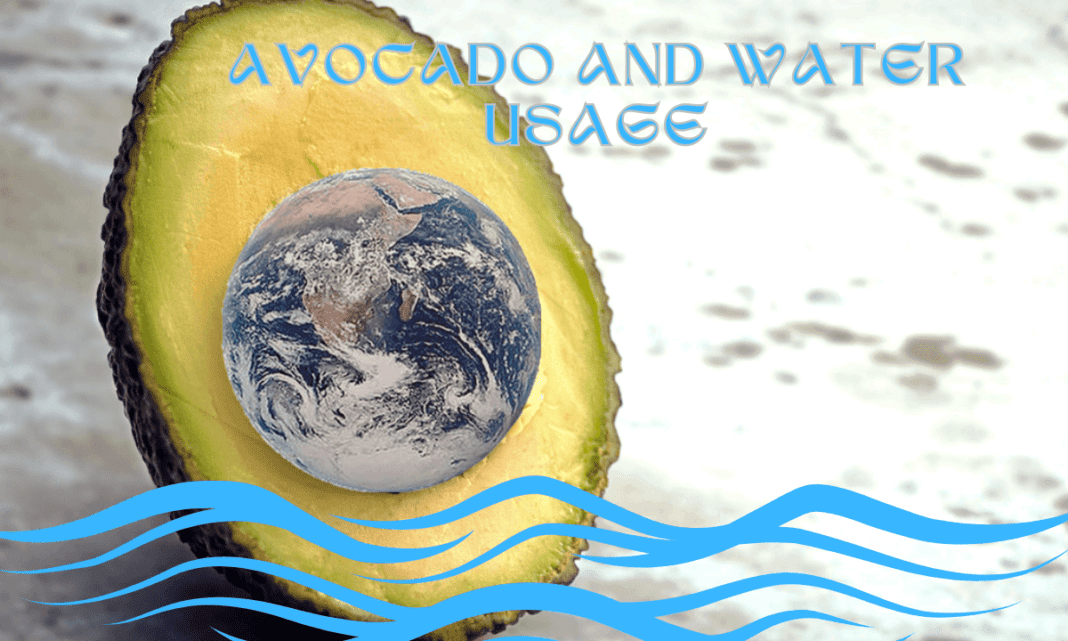Avocado and Water Usage: Are Avocados Harmful To The Environment?

Avocado and Water Usage: The average amount of water needed to cultivate one avocado is 70 liters. The 2015 Danidas CSR-pulje was supported. The typical amount of water needed to grow one kilogram of avocados is around 283 liters.
This does not include precipitation or soil moisture; instead, it refers to newly applied surface or groundwater by irrigation or other means to provide a fruit harvest.
Avocado and Water Usage:
Several social, economic, and marketing factors have contributed to the meteoric rise in avocado consumption over the past few decades, making the avocado market one of the world’s most dynamic and rapidly developing food categories.
However, several detrimental environmental and socioeconomic effects on the local populations in the primary production zones are linked to avocado cultivation, including water conflicts, pressures, and hot spots.
An immediate plan is required to prevent or lessen the impact of climate change in the tropical and subtropical regions that are now producing avocados.
To assess the critical capacity and ideal levels of avocado production, this roadmap must unite authorities, legislators, and primary and small producers from regions experiencing or expecting to experience water constraints.
As a key market for this fruit, the European Union (E.U.) might help pave the way by supporting and facilitating such a plan while actively encouraging imports from areas and countries where there is no imminent danger of severe water scarcity.
Ultimately, consumers can play a role in reducing negative impacts by actively practicing ethical consumerism and environmental conservation. This, in turn, helps sustain people in locations where products are produced.
2023 Ozone Hole Ranked 16th Biggest, According to NASA and NOAA Scientists,
Avocados: They’re Not as “avo-cuddly” or Environmentally Beneficial as You May Expect.
A researcher from Colorado State University has written a book about the history of avocados. The author claims that the widespread consumption of these “water hogs” has led to irrigation problems, deforestation, and the extinction of many species.
Jeffrey Miller, an associate professor, says that the overconsumption of fruit has harmful effects.
Miller has given up avocados unless there are California or Florida avocados in the supermarket, which rarely happens. “I think other people should follow suit.”
Miller has some disappointing things to say about avocados. He says they are “essentially water hogs,” and he doesn’t have “any sunny, cheery stories about avocados.” This may disappoint those who will enjoy guacamole on Cinco de Mayo or throughout summer porch season or who are celebrating Earth Day or Earth Month.
1. Jeffrey Miller from CSU: Why Do Avocados Use So Much Water?


Most producers—including those in water-scarce regions like South Africa, Israel, Australia, and North Africa—must irrigate extensively except for Mexico and the Dominican Republic. Although almonds are frequently used as an example of careless agricultural water usage, avocados are far worse.
Food Chains in Peril: How the Melting Ocean Floor is Changing Food Chains
2. What is The Best Place to Produce Avocados?
Avocados are a tropical fruit that can only be grown in a few regions. You must give them scandalous quantities of water if you want them to be viable elsewhere. Nearly every one of these areas is already severely water-strapped. However, less powerful consumers are disenfranchised since large-scale agribusinesses allow massive amounts of water to grow avocados.
3. How About Mexican Avocados?
Oyamel fir forests, essential for the monarch butterfly’s existence, are cleared to make way for avocado orchards. Narco-traficantes, or drug dealers, often “tax” avocados from Mexico.
The groundwater used by small-holder farmers is depleting due to the changing rainfall patterns in Michoacán and the fact that avocado trees have different water needs than first. Assuming they are Mexican, avocados are inherently immoral.
4. Jeffery Miller’s Avocado: A Global History, Cover Art: Do You Have Any Thoughts on Using Guacamole, Which has Already Been Made?
Since pre-made guacamole is typically created with avocados that aren’t quite marketable in the produce section of American grocery stores, buying it is a slightly less sinful option than buying avocados that would otherwise go to waste. Additionally, avocados that have ripened on trees commonly make pre-made guacamole, which may enhance their nutritious content.
5. Alright, What About Avocados from the U.S.?
Workers in California are protected from unsafe working conditions and must adhere to strict regulations when growing and harvesting avocados. In Florida, it is the same. Because of the abundant rainfall in Florida, avocados hardly ever require irrigation.
Watering avocado trees is a common practice in California. Development is cutting into avocado orchards in California, and other crops, like strawberries, offer a higher financial return. Therefore, production is down.
Eco-Anxiety: How Can We Bring Piece In This Changing World
6. In What Ways Has the Avocado’s Meteoric Rise in Popularity Affected the Business Climate?
Countries with an avocado export surplus tend to have governments eager to hand power to corporations to strike a better trade balance. Much of Mexico’s commerce is controlled by U.S. agriculture and narco-traffic-antes tax a large portion of the trade in this business. Unless they have a personal avocado tree, low-income Mexicans rarely eat avocados because of their rising price.
7. The Popularity of Avocados—When and Why Did it Bloom?
As more people warm up to Mexican, Tex-Mex, and Southwestern cuisine, the popularity of these dishes has been rising in tandem. From the 1970s onward, these cuisines became increasingly popular across North America.
Then, word spread throughout Europe and Australia about these delicacies. Marketing for avocados took off, and it has had the desired effect. Mexican avocados rose in popularity after their inaugural Super Bowl commercial in 2015.
8. Are Avocados Healthy for Humans to Eat?
People tend to exaggerate the nutritional benefits of avocados. They contain a lot of calories, too. Avocados are best saved for exceptional occasions. Avocados from the United States are best enjoyed throughout the fall when they are more readily available.
Does Growing Avocados Have a Negligible Effect on the Environment?


Like other foods that become commodities, avocados have an environmental impact. This is true of coffee, palm oil, sugar, whole flour, and soy. Monoculture refers to growing a single crop on the same plot of land for multiple consecutive years, such as avocado trees.
Although this kind of farming on a large scale may seem appealing from an economic perspective, it poses serious environmental risks. It renders avocado production unsustainable in the long term. Why?
Reasons abound. To make a long tale short, monoculture crops expose the soil to more diseases and reduce its nutrient content, increasing the usage of pesticides and fertilizers.
Both typically pollute soils and the surrounding biodiversity (including human lives) when carried by runoff waters into faraway environments, as appears to be happening with the monarch butterfly reduction in Mexico. Another adverse effect of monoculture crops is the gradual loss of soil mineral content over extended periods.
Concurrently, farmers across the globe have been sowing seedlings of avocado plants beneath the canopy of trees in Mexico and elsewhere. Subsequently, they gradually chop down older trees and bushes to make way for avocado plants, which leads to deforestation and, by extension, climate change and global warming.
However, the excessive water consumption of avocados is the real unique selling point (for all the wrong reasons) of their production. Some studies have shown that avocados are one of the three crops that put the most strain on water resources where they are grown. UNESCO found that avocados use an average of 1981 m3/ton of water worldwide.
To give you an idea of how much water avocados use, consider that grape crops use 608 m3/ton of water. However, the situation around avocado production will heat up soon.
The Climate Crisis Will Reach A Tipping Point In 2024: “It’s Not Game Over, It’s Game On.”
How Growing Avocados Affects Society
Avocado imports from Mexico have surged to meet the surging demand. Many farmers benefited monetarily, and the number of people engaged in this sector grew substantially. However, drug cartels and organized criminal groups like the Jalisco New Generation Cartel and the Caballeros Templarios (Knights Templar) were also interested.
Therefore, it’s likely that criminals are getting a cut of the profits when you purchase a Mexican avocado.
These organized groups learn the locations of avocado producers and the amount of land they hold by extorting or bribing personnel of state agencies. They “ask” the farmers for a (significant) earnings cut once they’ve estimated how much money would be made.
The silver or lead route works out in Africa and Latin America. The landowners face threats of violence or the destruction of their avocado crops if the gangs do not divide the revenues. Although some communities are using force to combat the influence of these cartels, the majority of landowners are coerced into complying and even paying their staff poor wages so that the criminals can reap a more significant percentage of the profits.
There Is A Cost to the Avocado Benefits. Where Do We Stand?
Avocado Production Advantages and Ecological Effects


It would be reasonable to assume that importing avocados from nations with less political unrest would address this problem. But how can we know if avocados grown in Colombia, Chile, Peru, or the Dominican Republic are grown in a more environmentally or socially responsible manner?
There needs to be more transparency regarding the environmental policies and labor circumstances of the farmers and harvesters whose labor goes into producing our food.
Because of this, the importation of particular fruits or other goods should not be boycotted. Consider it more evidence that we must quit eating imported goods as if they were made, traded, and distributed locally and quit treating avocados and other trendy foods as if they were the newest trend.
This being the case, maybe we should stop treating “tourist” foods as if they were homegrown and start eating them more sparingly. However, to combat the environmental impacts of avocado production, including deforestation, it is recommended to consume them cautiously and occasionally. This will reduce demand and, in turn, supply.
Suppose we want to know how avocados and other crops like palm oil, coffee, and bananas affect society. In that case, we can check for the Fairtrade label.
The accreditation ensures that the working conditions and remuneration of the farmers and their employees are fair and superior to most in their industry. You can’t tell if local workers were treated decently or the environment was protected if you get an organic avocado that isn’t Fairtrade.
From a nutritional standpoint, what does an avocado offer that we can’t obtain from other sources? This aligns with Joanna Blythman’s reasoning in her piece for The Guardian. Those in need of vitamin K can find it in cabbages and broccoli.
Vitamin E is abundant in almonds, sunflower seeds, and wheat germ oil. Beans, lentils, and cauliflower are good sources of folate, often known as vitamin B9. Extra virgin olive oil, peanut oil, sesame oil, and monounsaturated oil are all excellent substitutes.
Suppose you’re concerned about the ethical implications of purchasing avocados that don’t have a fair trade label and are sourced from problematic countries. In that case, there are lots of options that offer the same benefits.
This avocado is an excellent example of how we should be mindful of our impact on the environment and the people who farm it before consuming it, even if it’s just for our consumption.
Customers like us don’t care if the question is about silver or lead; there are plenty of other options; we should choose locally grown foods that don’t require as much water.
Alternatives to Avocados


You may have seen avocados included in healthy meal plans if you’re a health enthusiast. The avocado’s status as a whole food is not coincidental. According to Harvard, this gorgeously verdant fruit is rich in monounsaturated fat, insoluble fiber, B vitamins, C, E, K, Folate, Potassium, Magnesium, and Carotenoids. It’s also a great source of potassium and magnesium.
One drawback to avocados, though, is their price. In India, the price of one avocado can range from Rs100 to Rs150, making it an unaffordable luxury for many people. This is especially true considering the abundance of cheaper options with the same nutritional value.
List of the Top 10 U.S. Packaging Design Agencies
Affordable Alternatives to Avocados
To ensure that your meal plan provides the same amount of nutrients without sacrificing avocado flavor or texture, it is crucial to know the nutritional count of this Mexican fruit. According to the Harvard School of Public Health, there are the following components in one medium avocado:
- Two forty-four calories
- fourteen grams of carbs
- 3.3 grams of protein
- The 22 grams of fat consist of 15 grams of monounsaturated fat, 4 grams of polyunsaturated fat, and 3 grams of saturated fat.
- ten grams of fiber
- Eleven milligrams of salt
- Avocados have no cholesterol and low sodium levels.
Here is a list of economical and healthy alternatives to avocados. Only some people know how many nutrients are in each meal.
1. Greek Yogurt Low-Cost Avocado Substitutes
Greek yogurt may substitute for avocado in a variety of recipes. Its versatile texture and creamy taste make it a great alternative to avocado. Blend it with spices and herbs to make a savory dip, or sprinkle it on salads and tacos. Because of its high protein content and plenty of probiotics, this affordable option is great for maintaining a healthy digestive tract.
2. Healthy Hummus
When avocado isn’t available, hummus is a great creamy substitute. Chickpeas, sesame, lemon juice, and garlic combine to make this a fantastic plant-based protein source. This flavorful and velvety paste has several potential uses, including a dip for vegetables, a sauce for pasta, or a spread for sandwiches.
3. Homemade Cottage Cheese or Paneer
The versatile Indian cheese paneer is a staple in Indian cuisine. It provides a great source of protein and calcium for your daily diet. The following are some creative ways to prepare cottage cheese: use it in a sandwich, grill it and top it with mint chutney, lemon juice, and a blend of spices; eat it raw with fruits and honey; or look for low-fat Indian dishes.
4. Sweet Potatoes


Instead of avocados, sweet potatoes are another healthy and inexpensive option. Just boil and mash some sweet potatoes until they become the consistency of avocados. Plus, they’re full of vitamins and fiber, and they have a natural sweetness to them.
5. Enchanted Tofu
Silken tofu is an excellent substitute for avocado that does not include dairy. Its velvety texture makes it ideal for blending into soups, salad dressings, smoothies, and other creamy recipes.
As a bonus, tofu can absorb the flavors of whatever it’s cooked with, making it a versatile plant-based protein source. Frying it in a light batter or cooking it in oriental sauces like sweet chili and soy sauce makes it the ideal rainy-day snack.
6. Fruit Spreads
Enhance your dishes with rich flavors. Use almond, peanut, or cashew butter. Nut butters are high in protein and good fats. Blend nut butter with water, lemon juice, and seasonings to make a creamy noodle sauce or spread it on sandwiches and wraps. Mix nut butter with honey instead of jam as a toast topping.
7. Eggplant
Grilled or roasted eggplant is a low-calorie, high-fiber substitute that tastes like avocado. It mimics its creamy smoothness without the guilt. Substitute it for the original ingredient in your favorite salads, wraps, and sandwiches. Try it in low-oil, spice-rich Indian dishes or sprinkle it on whole-wheat pasta and pizzas.
8. Plant-Based Foods
The heart-healthy fats, fiber, vitamin E, magnesium, and antioxidants found in almonds, chia seeds, and sunflower seeds all work together to improve brain function and reduce inflammation. Use them as a snack on the go, or sprinkle them on your favorite breakfast cereal, yogurt, smoothie, oatmeal, or cornflakes.
Avocados are expensive but worth every penny because they’re tasty and healthy. Eating an avocado for the first time is acceptable if you’ve never had one. Nonetheless, many economical and functional substitutes can enhance your dishes’ nutritional value, flavor, and creaminess. You should be fully informed about any food allergies, dietary restrictions, or needs you may have before making any choices.
Please subscribe to blogkingworld.com if you enjoy reading my posts and would like to read more exciting stories. It Means a Lot That You Took the Time to Read My Story. I pray that God blesses all of you and keeps you safe. Amen.




